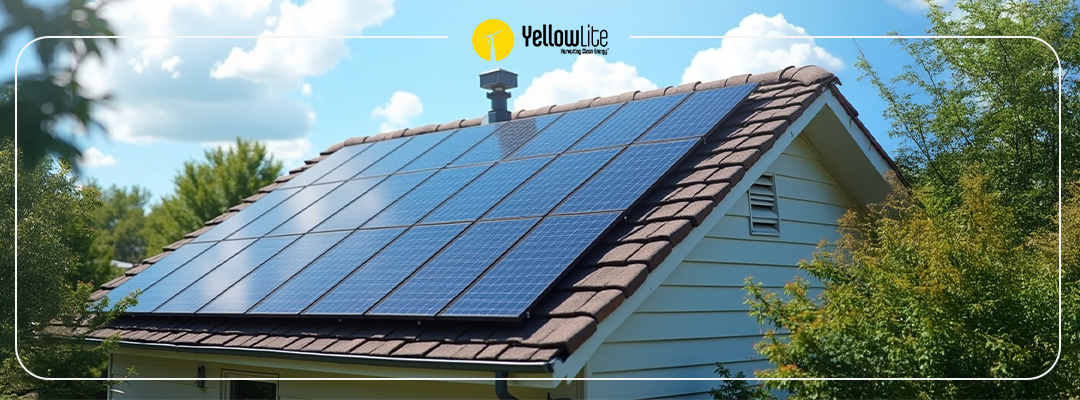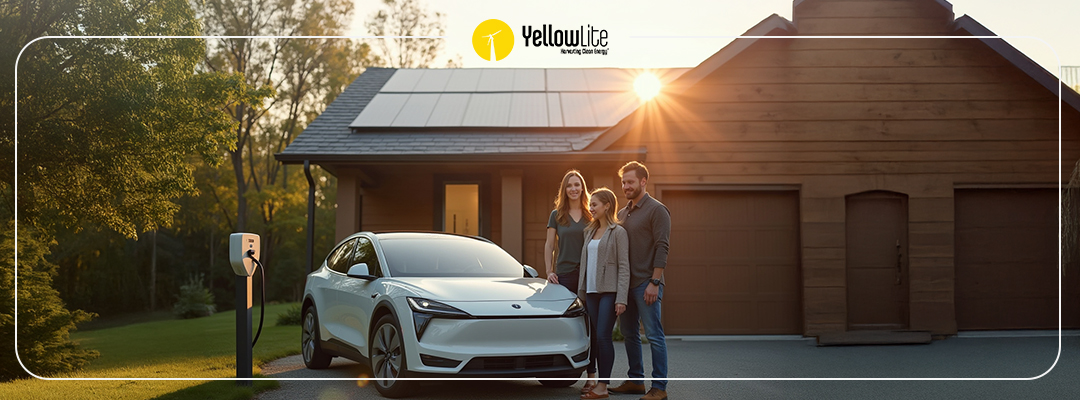When it comes to household appliances, the clothes dryer is one of the biggest energy consumers. For homeowners in Ohio, Midwest and further afield, understanding how much electricity your dryer uses is key to managing energy costs, improving efficiency, and making informed decisions about your energy usage. As solar energy becomes increasingly popular, it’s also important to explore how harnessing solar power can offset the energy demands of your dryer and contribute to a more sustainable home. This blog will break down the energy consumption of dryers and show how solar energy can help reduce your electricity bill.
How Much Electricity Does a Dryer Use?
The amount of electricity a dryer uses depends on several factors, including the type of dryer, its age, energy efficiency, and how often it’s used. On average, a standard electric dryer uses between 2,000 and 6,000 watts (2 to 6 kW) of power per cycle. Let’s take a closer look at the factors that influence a dryer’s energy consumption:
- Type of Dryer
- Electric dryers are the most common and typically use more energy than gas dryers, which rely on natural gas or propane. However, the majority of homes use electric dryers, so this blog will focus on their energy consumption.
- Load Size
- Larger loads require more energy to dry. Overloading your dryer can also extend drying time and increase energy use.
- Dryer Efficiency
- Newer models tend to be more energy-efficient, using advanced sensors and drying technologies to reduce energy consumption. ENERGY STAR® certified dryers can use 20% less energy than standard models.
- Usage Frequency
- The more you use your dryer, the more electricity it consumes. Households with multiple loads per week will see higher energy consumption compared to those with fewer loads.
Calculating the Cost of Running Your Dryer
To estimate the cost of running your dryer, you can use this simple formula:
Cost=Wattage×Hours Used Per Cycle×Cost per kWhCost=Wattage×Hours Used Per Cycle×Cost per kWh
For example, if you have a 5,000-watt dryer that runs for 1 hour per load and your electricity rate is $0.12 per kWh, the cost per load would be:
5,000×1×0.12/1,000=$0.60 per load5,000×1×0.12/1,000=$0.60 per load
If you run 5 loads per week, the monthly cost would be:
$0.60×5×4=$12 per month$0.60×5×4=$12 per month
In this example, over a year, this adds up to $144—just for drying clothes. These costs can be higher depending on your dryer’s efficiency, usage, and local electricity rates.
How Solar Energy Can Help Offset Dryer Costs
Switching to solar energy can significantly offset the electricity costs associated with running your dryer. Here’s how:
- Powering Your Dryer with Solar Energy
- When you install a solar energy system, the electricity generated by your solar panels can be used to power your home’s appliances, including your dryer. Your solar panels produce electricity that can directly power your dryer, reducing or even eliminating the need to draw power from the grid.
- Net Metering Benefits
- In many states, including Ohio, net metering allows you to sell excess solar energy back to the grid. This can further offset the cost of electricity used during times when your solar panels aren’t producing energy, such as at night or during cloudy weather.
- Reducing Overall Energy Consumption
- By combining solar energy with energy-efficient appliances, such as an ENERGY STAR® certified dryer, you can significantly reduce your household’s overall energy consumption. This makes your solar investment even more impactful, maximizing the return on your solar system.
- Long-Term Savings
- Over time, the savings from using solar energy to power your dryer and other household appliances can add up. These savings help offset the initial cost of your solar installation, making it a wise financial investment for long-term energy cost reduction.
Practical Tips for Reducing Dryer Energy Use
In addition to switching to solar power, there are several steps you can take to reduce the energy consumption of your dryer:
- Clean the Lint Filter Regularly
- A clean lint filter improves airflow, allowing your dryer to work more efficiently and reducing drying time.
- Use the Right Drying Cycle
- Use moisture-sensing cycles instead of timed cycles to prevent over-drying, which wastes energy.
- Air-Dry When Possible
- During warm months, consider air-drying clothes outdoors to save energy. This also reduces wear and tear on your clothes.
- Dry Full Loads
- Drying full loads, but not overloading the dryer, ensures the machine operates at optimal efficiency.
- Use Dryer Balls
- Adding dryer balls to your load can help reduce drying time by improving air circulation.
Understanding how much electricity your dryer uses is an important part of managing your home’s energy consumption. By pairing energy-efficient practices with solar energy, you can significantly reduce the costs associated with running your dryer while also contributing to a more sustainable future. For homeowners, switching to solar energy is a practical and environmentally friendly way to take control of your energy use.
At YellowLite, we specialize in helping homeowners harness the power of solar energy to reduce their utility bills and achieve energy independence. Interested in learning more about how solar can power your home and appliances? Contact YellowLite today to explore your options and start your journey toward a cleaner, more efficient energy future.



